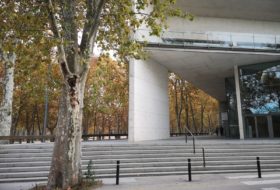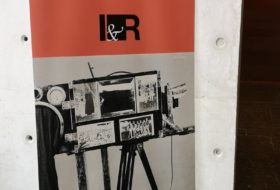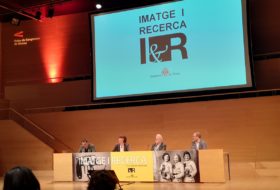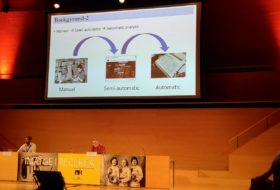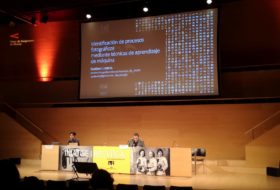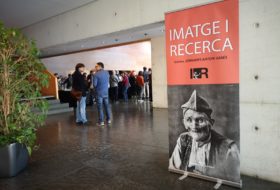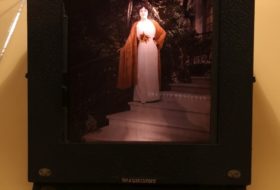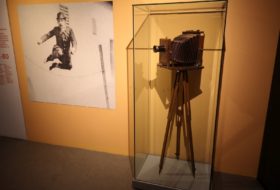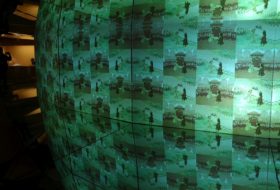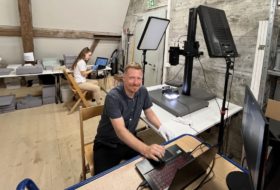The Image and Research (Imatge i Recerca) Conference has been held every two years since its establishment in 1990, and this year regained its presence after the break caused by the COVID pandemic. The main organiser is the Centre de Recerca i Difusió de la Imatge (CRDI), an institution of the Girona City Council, which processes and researches archival audio and visual documents, and whose official collection area includes not only the municipality but also individuals, family collections and material produced by companies. But the importance of the archives of this small Catalan town extends far beyond its medieval walls, with the 17th edition of the international conference named after the Girona-born photographer, poster artist and filmmaker Antoni Varés (1909-1966). The event brings together experts in the field of photographic and audiovisual preservation to discuss the practical, technical and ethical issues of this specialised field and to present the latest developments. Internationality is an explicit aim of the conference, so each session features presentations by experts of different nationalities, and the Centre has the cooperative support of the International Council of Archives (ICA) and other organisations in this endeavour. Our Foundation was represented by Szilveszter Dékány, Chief Collections Officer, in charge of the photo and audiovisual collection.
Few technological changes in the management of photo collections in recent decades have been as significant as the emergence and potential application of Artificial Intelligence (AI). The technology, which can also process large amounts of visual information quickly, can not only speed up the work of organising, but also make visual collections more user-friendly. “AI is coming!” – one could paraphrase the motto of the popular Game of Thrones series, which is currently being filmed in several locations in Girona, but in fact AI is already here, just think of Google Lens or, on the home platform, ADT’s facial recognition viewfinder. It’s no coincidence, then, that several of the presentations at the conference focused on this theme.
Video made from archive photos using Artificial Intelligence (AI)
Is your collection ready for AI? – asked Yalemislew Abgaz of Dublin City University in his opening presentation. The speaker demonstrated through two pilot projects how AI image processing is now specialised in a particular topic. Instead of the classical physical description of the collection, the focus is on content description using artificial intelligence, but we cannot ignore the cultural aspects that the human, the collection professional, can add and thus control the processing process. Gustavo Lozano, a photographic archivist at the National University of Mexico’s Institute of Aesthetics, also pointed out that AI is a tool that can be used to improve the quality of access to cultural heritage, but that human aspects and a multifaceted approach to the processing of visual content should not be ignored. Artistic applications of artificial intelligence were presented by Daniel Pitarch, a member of the Estampa art group, who create visual installations based on the CRDI image collection. Pitarch pointed out an interesting technical aspect of the limitations of AI, in that it was difficult for the system to generate human teeth from the images it created, as the subjects in the processed collection, mainly late 19th and early 20th century portraits, typically had rather sombre faces, so there were no smiling people from which to glean this information.
Although there is professional consensus that digitisation is essential for the management of visual cultural heritage, different countries and institutions have different strategies for managing this process. The Belgian way was presented by Brecht Declercq, representing the Flemish Institute of Archives (Meemoo), who began his presentation with a brief outline of the strategy to be followed, with the slogan “Digitize now!”. Meemoo acts as an intermediary between content partners and service providers: it collects and synthesises the material to be digitised and organises the digitisation process. After about ten years of professional lobbying, the Belgian State decided to create and finance this institution. Its effectiveness is demonstrated by the fact that by 2022, 80% of the Belgian photographic and audiovisual heritage will have been digitised. The holdings are given to the institutions providing them, and the organisation publishes a description and links to them on its website for copyright reasons.
Damián González Dominguez presented a selection from the very rich photo collection of the Geneva-based International Red Cross Archives. This archive is of particular interest to our Foundation, given the Habsburg family’s rich links with Red Cross institutions.
The presentations were related to the processing and management of Otto von Habsburg’s photographic legacy in several other respects, since the international arc of his career involves numerous collections, and the new technical possibilities presented at the conference may provide useful assistance in processing the extensive network of contacts of our namesake.
In addition to the theoretical part, the conference also offered practical guidance, as participants could take part in workshops on topics such as natural disasters that can affect archives. For example, the threats posed by climate change, flooding, rainfall, preparing for damage caused by fires – just remember the tragedy of the Cologne archives in 2009, or the fire at the Ráday Collection in 2019, as a domestic example.
For those interested in visual collections, Girona has another special place to visit: the Museu del Cinema, with its permanent exhibition, programmes and searchable collection, offers a comprehensive and exciting overview of the history of photography, cinema and film.
Szilveszter Dékány

